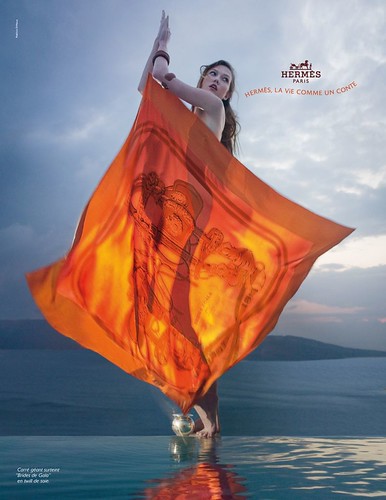Monday, January 31, 2011
A hidden gem: Conversation(s) with other Women
It made me think of a truly daring experiment, the movie Conversation(s) with other Women (2005), filmed entirely in split screen. Similar to a two-person play, it stars Aaron Eckhart and Helena Bonham Carter (nominated for Best Supporting Actress Oscar this year), who give perfect performances.
In the film, two wedding guests, identified only as Man (Eckhart) and a bridesmaid called Woman (Bonham Carter) start a conversation that lasts all night. Their dialogue does not make it clear if they knew each other already, if one forgot the other, or if they are pretending to have forgotten. This aspect of the film recalls Ionesco’s The Bald Soprano, where two characters discover at one point in the play that they are actually husband and wife.
The split-screen technique is used to show the same scene from slightly different angles. It is also used to present the differences between formulating a phrase in your head and what actually comes out. Or maybe what a phrase meant to one person and how the other person heard it. The way the technique is used, also suggested the possibility of alternate realities, dependant on different things being said or done (like the German film Run Lola Run). Although the technique seems complicated, the viewing experience is effortless. But, as the Woman says in the film: “The illusion of effortlessness requires a great effort indeed”.
Conversation(s) with other Women has thought-provoking observations about the fluidity of time, memory, love, the unavoidable changes through which a person goes while getting older (hence, the Women in the plural of the title, because after all, are you the same person you were 10 years ago?), the expectations of youth and the disillusionments of adulthood.
The film is written by Gabrielle Zevin and directed by Hans Canosa. In a tour de force, the actors shot 80 pages of dialogue in only 12 days of filming. Its small budget meant that the actors wore their own clothes, with Eckhart wearing his own Armani suit and Helena Bonham Carter her Prada shoes. Also, the visual effects were done by the visual effects supervisor himself, using Adobe After Effects, as the VFX houses were requesting double the film’s budget.
The fact that Conversation(s) with other Women had such a small budget, and that it flew under the radar of the big-shot awards suggests that filmmakers are still passionate and taking risks to make great films. It also suggests that two established stars like Aaron Eckhart and Helena Bonham Carter really love acting, and are willing to do it at times not for money nor fame, but because they believe that they are creating something valuable.
Friday, November 19, 2010
Be Childish

Tomorrow it’s the Universal Children's Day and to support it, on Facebook everybody is changing their profile picture into what used to be their favorite cartoon growing up.
What started as a link of an obscure Facebook page went hugely viral in just a few days and some estimate that around 500 000 people have changed their profile pictures into Disney princesses, Looney Toons and manga heroes. I personally am Bugs Bunny. The “I’ve just eaten/scratched my head/look at my vacation pictures” usual mind-numbing boring Facebook updates have now a common topic that is both nostalgic and escapist.
The immediate and enthusiastic way people have responded by changing their profile picture has made me think of the Hermès’s 2010 ad campaign "Life as a Tale", shot by the Italian photographer Paolo Roversi which has many references to fairy tales and popular films.
In Hermès’s spring/summer ads with a background of infinite sky above a tranquil deep blue sea, model Karlie Kloss calls to mind Cinderella whilst she is losing her sandal on the whitewashed steps of a Greek Island, sits on a rock watching the sea like Andersen’s Little Mermaid in Copenhagen, or has a silk scarf braided in her hair that hangs down like Rapunzel’s.
The tree house recalls Alice in Wonderland and a gorgeous orange scarf comes out of Alladin’s lamp with Kloss as the genie. The photo of Kloss with flowers in her hair has made me think of Michael Whelan’s Summer Queen.
Summer Queen by Michael Whelan.
For the autumn/winter campaign Roversi shot models Constance Jablonski and Jonas Mason in dark, misty, moonlit streets with references to Zorro’s adventures and Sherlock Holmes’s mysteries. Anticipating Christmas, a carriage full of orange packages mysteriously escapes without a driver.
The use of well-known fairy tale motifs and films that the viewer can immediately identify makes the campaign very effective. Due to the limited time a viewer spends on a magazine page or the few-minutes length of a tv-spot, the faster an advertising message is understood the better. So by tapping from folklore and fairy tale themes, the foundation onto which the advertising message is built is already there in the viewer's imagination and memory.
In Hermès’s campaign, Paolo Roversi’s imagery is so pervasive that the viewer is able to ignore the scarves’ hundreds of dollars price and just be enchanted by the photographs and dream for a moment of a happy ending fairy tale or feel the thrill of a midnight mystery.
So even if our childhood symbols are used for commercial purposes, sometimes the results are great and some commercials provoke an emotional response even if you know they are there just to sell you stuff. Sometimes advertising is art DESPITE itself.
Photographs by Paolo Roversi. Hermès 2010 print ad campaign.
Summer Queen by Michel Whelan.
















